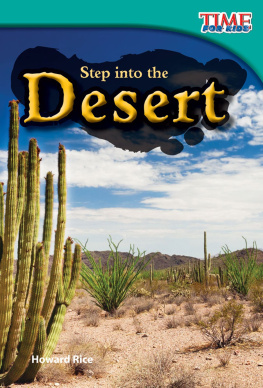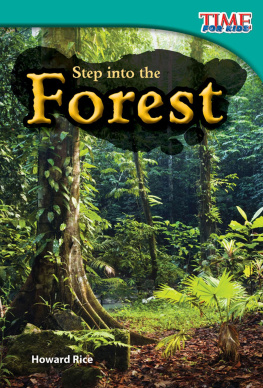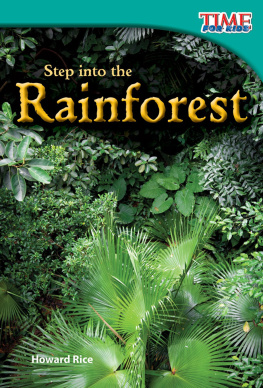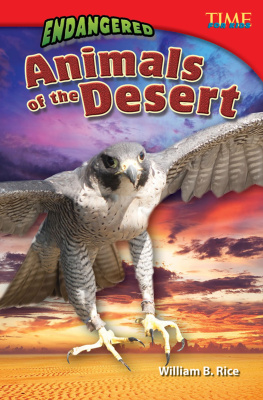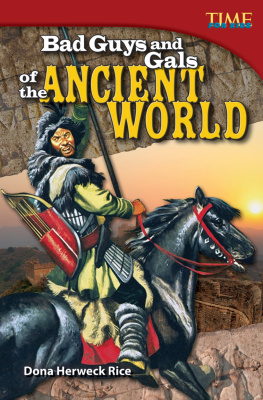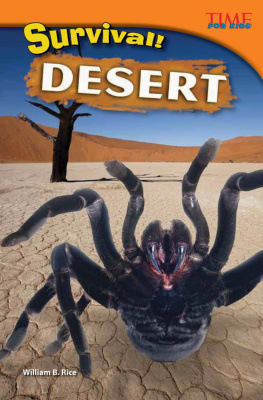
Howard Rice


Image Credits
Cover Frank Bach/Shutterstock; p.3 Isabella Pfenninger/Shutterstock; p.4 imagebroker rf/Photolibrary;
p.5 Tischenko Irina/Shutterstock; p.6 Rechitan Sorin/Shutterstock; p.7 top: Arkady/Shutterstock; p.7 bottom:
Galyna Andrishko/Shutterstock; p.8 USGS/www.ga.water.usgs.gov; p.9 Photomorphic/iStockphoto; p.10 top: Pete
Turner/Getty Images; p.10 bottom: EuToch/Shutterstock; p.11 top: hainaultphoto/Shutterstock; p.11 bottom:
Galyna Andrushko/Shutterstock; p.12 EuToch/Shutterstock; p.13 Cartesia; p.14 Cartesia; p.15 top: Evgeniapp/
Shutterstock; p.15 bottom: Patrick Poendl/Shutterstock; p.16 Tim Roberts Photography/Shutterstock; p.17
Anthon Jackson/Shutterstock; p.18 Pichugin Dmitry/Shutterstock; p.19 top: Arkady/Shutterstock; p.19 Pichugin
Dmitry/Shutterstock; p.20 Zeljko Radojko/Shutterstock; p.21 Wolf Lang - CNImaging/Newscom; p.22 Isabella
Pfenninger/Shutterstock; p.23 top: Vladimir Wrangel/Shutterstock; p.23 bottom: david vadala/Shutterstock; p.24
top: Joe Belanger/Shutterstock; p.24 left: Arkady/Shutterstock; p.24 right: efendy/Shutterstock; p.25 Caitlin Mirra/
Shutterstock; p.26 left top: Jery M. Frank/Shutterstock; p.26 left bottom: Litwin Photography/Shutterstock;
p.26 right top: Tom McHugh/Science Photo Library; p.26 right bottom: Wild At Art/Shutterstock; p.27 Darren J.
Bradley/Shutterstock; p.28 Keattikorn/Shutterstock; back cover Tischenko Irina/Shutterstock; background nito/
Shutterstock
Based on writing from TIME For Kids.
TIME For Kids and the TIME For Kids logo are registered trademarks of TIME Inc.
Used under license.
Teacher Created Materials
5301 Oceanus Drive
Huntington Beach, CA 92649-1030
http://www.tcmpub.com
ISBN 978-1-4333-3629-4
2012 Teacher Created Materials, Inc.
Consultant
Timothy Rasinski, Ph.D.
Kent State University
Publishing Credits
Dona Herweck Rice, Editor-in-Chief
Robin Erickson, Production Director
Lee Aucoin, Creative Director
Conni Medina, M.A.Ed., Editorial Director
Jamey Acosta, Editor
Stephanie Reid, Photo Editor
Rachelle Cracchiolo, M.S.Ed., Publisher
Synched Read-Along Version by:
Triangle Interactive LLC
PO Box 573
Prior Lake, MN 55372
ISBN-13: 978-1-68444-794-7 (e-book)

Table of Contents
Where Are You? ..............................
What Is a Desert? .............................
Where Are They? ...........................
How Are They Formed? ...............
Can Anything Live There? ...........
Glossary ........................................... 28

Where Are You?
Look around. The sky is big
and blue. The ground is dry and
bare. Hills of sand cross the land as
far as you can see. In the distance,
a string of camels walks slowly in
the rising sun. It is hot and getting
hotter.

Where are you?
You are in a desert , of course!

What Is a Desert?
A desert is an area of land with
very little rain and, most of the time,
high temperatures during the day.

In a desert, there is less than
inches of rain each year. The
ground is usually dry.

Whenever it rains in a desert,
the heat of the sun dries up most of
the water. This is called evaporation
(ih-vap-uh-REY-shuhn).
Evaporation happens when water
changes from a liquid and becomes
vapor in the air.
precipitation
evaporation
condensation
evaporation
groundwater runoff
snow melt
surface runoff

One reason for evaporation
is the high temperatures. Desert
nights can be cold because during
the night the ground releases its
heat. But during the day, the
ground soaks up the heat.
condensation
evaporation

The temperature in the desert
can reach as high as
F!

How hot is that? Most people
are comfortable at about
F.
Deserts can get almost twice that hot!

Where Are They?
Most of the
deserts are in two
areas called the
Tropic of Cancer
and the Tropic of
Capricorn . Look at
the map to find the
tropics. The map
also shows where
you can find the
worlds great deserts.
Equator
Tropic of Capricorn
Tropic of Cancer
Deserts of the World
North American
Atacama
Patagonian
Sahara
Namib
Kalahari
Arabian
Turkestan
Iranian
Thar
Taklamakan-Gobi
Australian

Equator
Tropic of Capricorn
Tropic of Cancer
Deserts of the World
North American
Atacama
Patagonian
Sahara
Namib
Kalahari
Arabian
Turkestan
Iranian

